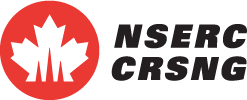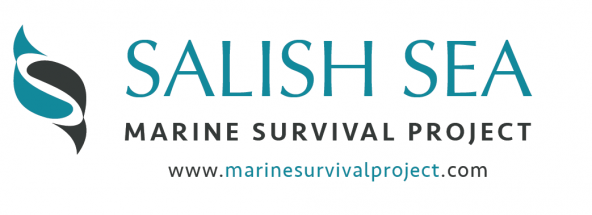LIA CHALIFOUR
PhD Biology
I am a marine conservation biologist based in the traditional territories of the W̱SÁNEĆ and lək̓ʷəŋən Peoples. If you are interested in collaborating or hiring me for contract work, please reach out at lia.chalifour(at)gmail.com.
Recently I worked as the Coastal Conservation Lead for the North Coast-Skeena First Nations Stewardship Society, supporting the North Coast Cumulative Effects Program for 3 years by coordinating conservation and restoration planning in BC's second largest estuary, the Skeena. I worked closely with First Nations stewardship staff from Gitga'at, Gitxaała, Haisla, Kitselas, Kitsumkalum, and Metlakatla First Nations and continue to maintain ties to conservation initiatives underway on the North Coast. As part of this role and my previous work in the Salish Sea, I am connected with coastal research networks via the Marine Plan Partnership, Hakai Institute, and the Pacific Salmon Foundation.
I completed my PhD with Julia Baum (University of Victoria) and co-supervised by
Tara Martin (University of British Columbia) in 2022. My research provided insight into nearshore habitat use by fishes of the Fraser River estuary, with a focus on conservation solutions for Pacific salmon. I am interested in applied ecology and conservation, and am drawn to local and regional projects that address the coexistence of humans and our natural coastal ecosystems.
ABOUT ME
I am passionate about science and conservation. Since completing my undergraduate degree at UVic in 2011, I have spent several valuable years working with environmental NGO's to conserve terrestrial and aquatic species at risk in BC and Alberta, including the White Meconella flower, grizzly bears, the Olympia oyster, and Salish Sea rockfish populations. I highly value community outreach and environmental education initiatives, which is why I spent a year working as the Education Director with CPAWS Southern Alberta Chapter. I connected with public and school groups throughout my PhD project, to continue to share about the research I am doing and my experiences as a woman in STEM. I am an advocate for underrepresented folks in science and am on an ongoing personal journey to become a better ally. In my final year at UVic I was a graduate student representative on the newly formed Biology EDI Committee, working to help improve conditions for a stronger research community.


MY RESEARCH
Salmon Habitats and Conservation
We have had some very dedicated journalists cover our work as part of features on the complex issues of the Fraser River and estuary. Please check out their stories:
What will it cost to keep wild salmon in B.C.'s Fraser River?, Stefan Labbé
Coastal Squeeze, Michelle Gamage
For the Fraser River delta, a crucial choice looms for species and a way of life, Ivan Semeniuk
What is Lost and Found on the Fraser River, Courtney L. Sexton and Michael O. Snyder
Climate adaptation research suffering from a silo mentality, Leigh Phillips
Researchers seine for marine life off Robert’s Bank port site, Larry Pynn (PDF download)

FISH HABITAT USE IN THE FRASER RIVER ESTUARY
In 2016 and 2017, I worked with Raincoast Conservation Foundation and Steve Stark of the Tsawwassen First Nation to conduct a rigorous assessment of seasonal variation in fish presence across three major habitat types in the Fraser River estuary. We sampled small fishes in seine nets bi-weekly over spring, summer and fall in 2016, and again in spring and summer in 2017. We did this in 17 sites that represented brackish marsh, eelgrass, and sand flat habitats. We found species-specific patterns across habitat types, seasons and years - demonstrating that all habitats are important and need to be managed as a connected seascape. We published this work in MEPS in 2019. See the news release with a summary of our findings by project partners here!
My colleagues have continued to conduct annual field sampling to monitor juvenile salmon use of the Fraser River estuary, led by Dave Scott and UBC.
QUANTIFYING JUVENILE SALMON GROWTH AND RESIDENCY
We retained juvenile Harrison Chinook salmon from our 2016 field season in the Fraser River estuary in order to assess their entry timing, residency, and growth in the estuary. Harrison Chinook enter the Fraser estuary as subyearlings, and were by far the most abundant salmonid caught in our study. They are known to rear in the estuary, but the precise habitats, entry timing, and length of residency were previously unquantified. By measuring their otoliths - tiny ear bones that grow proportionally to their bodies - I was able to identify exactly when they entered the brackish estuarine waters, and then directly measure their estuarine growth. This work was published in Dec. 2020 in the Canadian Journal of Fisheries and Aquatic Sciences - see the open access publication here. Raincoast conducted an interview of myself and Misty MacDuffee on this work, which you can find here. You can also read more about this work via my blog post here, and our press release here.


SALMONID USE OF EELGRASS HABITAT
Working with former Baum Lab post-doc Josie Iacarella, I contributed to regional studies that looked more specifically at how coastal fishes, including salmon, use eelgrass habitats across different regional gradients. Many of the eelgrass meadows in the Salish Sea are close to urban areas, and have been degraded by various anthropogenic disturbances. By looking at a variety of eelgrass meadows from Vancouver and Victoria up the BC coast to Prince Rupert, we were able to see how latitudinal gradients and anthropogenic disturbance influence fish communities in eelgrass meadows. We found that fish communities in the beds nearest human settlements were more homogenous - read our publication below.
PRIORITY THREAT MANAGEMENT IN THE LOWER FRASER RIVER
I am very excited to have worked with Dr. Tara Martin, an expert in conservation decision-science, to address several major conservation issues in the Fraser River. I collaborated with Dr. Martin and former Baum Lab post-doc Laura Kehoe on a "priority threat management" (PTM) approach for conservation of biodiversity in the Fraser River Estuary. We found that implementing a suite of management actions amounting to the cost of a pint of beer per Vancouver resident per year, especially if combined with a new governance framework, can significantly improve the conservation outcomes of 102 species over a 20-year period. This work was published in 2020 and covered twice by the Globe and Mail, first in 2018 and again in 2020 to specifically cover our results. Misty MacDuffee and I also spoke to the results during an online webinar with the Wild Bird Trust in the context of ongoing development pressure in the estuary, which you can view here.
We followed up this work with a deeper dive into salmon in the lower Fraser River with support from the Pacific Salmon Foundation and many local knowledge holders. We applied PTM to ask what are the optimal conservation strategies to support 19 salmon Conservation Units in the lower Fraser region? Our open-access paper was recently published in the Journal of Applied Ecology, and finds that on our current trajectory, none of these CUs will be assessed as 'green' or healthy status in 25 years. However, several cost-effective strategies were identified that can benefit these unique populations across five species. The most impactful option involves moving toward holistic management of salmon at a regional scale, including implementing a combined habitat strategy, which represents a systematic overhaul of habitat management in this highly impacted region. Implementing this combined habitat strategy as well as taking an Indigenous-led co-governance approach to salmon management allows the majority of these populations a reasonable chance to recover to green status. Read my blog post about our paper here. Learn more about this research at Tara's site here.


PUBLICATIONS
ESTUARINE HABITAT USE BY FISHES
Scott DC, Chalifour L, MacDuffee M, Baum JK, Beacham T, Rondeau E, Hinch SG. (2024) Variation in estuary use patterns of juvenile Chinook salmon in the Fraser River, BC. Can. J. Fish. Aquat. Sci. 81: 1264–1278. DOI: 10.1139/cjfas-2024-0012
Finn RJR, Chalifour L, Gergel SE, Hinch SG, Scott DC, Martin TG. (2021) Quantifying lost and inaccessible habitat for Pacific salmon in Canada's Lower Fraser River. Ecosphere 12(7):e03646. https://doi.org/10.1002/ecs2.3646 (Open access)
Chalifour L, Scott DC, MacDuffee M, Stark S, Dower JF, Beacham TD, Martin TG, Baum JK (2020) Chinook salmon exhibit long-term rearing and early marine growth in the Fraser River, B.C., a large urban estuary. Canadian Journal of Fisheries and Aquatic Sciences 78(5): 539-550. https://doi.org/10.1139/cjfas-2020-0247 (Open access)
Chalifour L, Scott DC, MacDuffee M, Iacarella JC, Martin TG, Baum JK (2019) Habitat use by juvenile salmon, other migratory fish, and resident fish species underscores the importance of estuarine habitat mosaics. Marine Ecology Progress Series 625:145-162. https://doi.org/10.3354/meps13064
Chalifour L, Scott DC, MacDuffee M, Dower JF, Beacham TD, Baum JK (2019) Characterizing Juvenile Chinook Salmon Residency and Early Growth in the Lower Fraser River Estuary. NPAFC Technical Report No. 15: 13-15. Extended Abstract
Scott DC, Chalifour L, MacDuffee M, Baum JK, Hinch SG (2019) Variation in Out-migration Timing and Estuary Reliance of “ocean-type” Chinook Salmon in the Fraser River Estuary, BC. NPAFC Technical Report No. 15: 25-27. Extended Abstract
Finn RJR, Chalifour L, Gergel SE, Hinch SG, Scott DC, Martin TG. (2023) Using systematic conservation planning to inform restoration of freshwater habitat and connectivity for salmon Conservation Science and Practice 5(8). https://doi.org/10.1111/csp2.12973 (Open access)
Chalifour L, Holt C, Bradford MJ, Camaclang AE, Dixon R, Finn RJR, Hemming V, Hinch SG, Levings CD, MacDuffee M, Nishimura DJH, Pearson M, Reynolds JD, Scott DC, Spremberg U, Stark S, Stevens J, Baum JK, Martin TG (2022) Identifying a pathway toward recovery for depleted wild Pacific salmon populations in a large watershed under multiple stressors. Journal of Applied Ecology https://besjournals.onlinelibrary.wiley.com/doi/10.1111/1365-2664.14239 (Open access)
Hemming V, Camaclang A, Adams M, Burgman M, Carbeck K, Carwardine J, Chades I, Chalifour L, Converse S, Davidson L, Finn R, Fleri J, Garrard G, Huard J, Mayfield H, McDonald Madden E, Naujokaitis-Lewis I, Possingham H, Rumpff L, Runge M, Stewart D, Tulloch V, Walshe T, Martin TG. (2022) An Introduction to Decision Science for Conservation. Conservation Biology 1-16. https://doi.org/10.1111/cobi.13868 (Open access)
Kehoe LJ, Lund J, Chalifour L, Asadian Y, Balke E, Boyd S, Carlson D, Casey JM, Connors B, Cryer N, Drever MC, Hinch SG, Levings CD, MacDuffee M, McGregor H, Richardson J, Scott DC, Stewart D, Vennesland RG, Wilkinson CE, Zevit P, Baum JK, Martin TG (2020) Conservation in heavily urbanized biodiverse regions requires urgent management action and attention to governance. Conservation Science and Practice. https://doi.org/10.1111/csp2.310 (Open access)
EELGRASS BLUE CARBON
Röhr ME, Holmer M, Baum JK, Björk M, Chin D, Chalifour L, et al. (2018) Blue carbon storage capacity of temperate eelgrass (Zostera
marina) meadows. Global Biogeochemical Cycles 32. https://doi.org/10.1029/2018GB005941
ANCHOVY IN THE SALISH SEA
Duguid W, Boldt J, Chalifour L, et al. (2018) Historical fluctuations and recent observations of Northern Anchovy in the Salish Sea. Deep-Sea Research Part II. Deep Sea Research Part II, 159:22-41. https://doi.org/10.1016/j.dsr2.2018.05.018
EELGRASS BIODIVERSITY
Iacarella JC, Adamczyk E, Bowen D, Chalifour L, et al. (2018) Anthropogenic disturbance homogenizes seagrass fish communities. Global Change Biology 00:1–15. DOI:10.1111/gcb.14090
BOOK REVIEWS
Chalifour L, Black M, Cox KD, Schroeder S, Juanes F (2017) Review of “Ecology of Salmonids in Estuaries around the World: Adaptations, Habitats, and Conservation” by Colin D. Levings. Fish and Fisheries 18(4): 790-791. DOI:10.1111/faf.12221
TECHNICAL REPORTS
Chalifour L (2013) Freedom to Swim: Research Component for Rockfish Recovery Project. Galiano Conservancy Association Final Report: 11-8552.
CONSERVATION DECISION SCIENCE

OUTREACH

CONTACT ME
Email: lia.chalifour[at]gmail.com
















